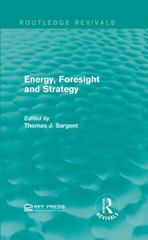Question
Which of the following is not true of the Keynesian model? Select one: A. The wage bargain is struck in terms of money wages. B.
Which of the following is not true of the Keynesian model?
Select one:
A. The wage bargain is struck in terms of money wages.
B. An increase in the expected price level would cause labour supply to decline.
C. Imperfect information about prices explains fluctuations in output and employment.
D. Price expectations are essentially forward-looking.
E. An increase in the money wage for a given value of the expected price level would increase labour supply.
Which of the following statement is not true?
Select one:
A. If money demand is completely interest insensitive, the LM curve is vertical.
B. An increase in money demand for speculation shifts the LM schedule to the left.
C. In the liquidity trap situation, increments to wealth would be held in the form of money.
D. Keynes assumes that investors have a relatively fixed conception of the critical interest. rates
E. A shift in the money demand function is also known as a shift in liquidity preference.
Within the IS-LM framework, an increase in tax collection
Select one:
A. causes the interest rate to increase.
B. causes income to fall by less than the horizontal distance of the shift in the IS schedule.
C. causes the horizontal distance by which the IS schedule shifts to equal T[-b(1 + b)].
D. causes bond demand to decline.
E. None of the above.
Which of the following is true?
Select one:
A. Keynes believed that the money wage would not adjust sufficiently to keep the economy at full employment.
B. Keynes argued that workers are only interested in their absolute wage.
C. Keynes believed that declines in real wages caused by price-level increases would meet equal resistance from labour as that of a money wage cut.
D. Keynes believed in the frictionless view of the labour market.
E. All above.
Points to left of the LM schedule indicate which of the following:
Select one:
A. An excess supply of money.
B. An excess demand for money.
C. Interest rate is too high for money market equilibrium.
D. Both A and C.
E. Both B and C.
Which of the following statement is true?
Select one:
A. Fiscal policy is less effective when investment is less sensitive to the interest rate.
B. An expansionary fiscal policy leads to crowding out of investment when investment is completely interest insensitive.
C. Monetary policy is very effective when investment is interest inelastic.
D. Monetary policy becomes more effective when the marginal propensity to save is large.
E. Fiscal policy is least effective when the interest elasticity of money demand is high.
In a closed economy:
C = 500 + 0.8Ydwhere C = consumption; Yd = disposable income
T = 0.2Ywhere T = tax; Y = income
I = 500where I = investment
G = 1000where G = government expenditure
If full employment is achieved when income is 6000, what is the budget at full
employment?
Select one:
A. Surplus, 844.44
B. Surplus, 155.56
C. Deficit, 155.56
D. Deficit, 244.45
E. Surplus, 244.45
Step by Step Solution
There are 3 Steps involved in it
Step: 1

Get Instant Access to Expert-Tailored Solutions
See step-by-step solutions with expert insights and AI powered tools for academic success
Step: 2

Step: 3

Ace Your Homework with AI
Get the answers you need in no time with our AI-driven, step-by-step assistance
Get Started


